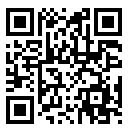Skype’s special site for teachers is worth checking out, even if it is mis-named. Skype in the Classroom should be “Skype in the School Library”.

Google has created more than 50 short (2-minute) videos with step-by-step instructions on all sorts of technology topics, ranging from how to “cut and paste” to how to create a blog.
The site is set up so children can e-mail a specific tech “care package” to their parents or grandparents. See TeachParentsTech.org
- The Big Shift: ebooks and streaming (rather than DVDs) is catching on faster than anticipated; moving seldom-used materials to off-site facilities. Regional repositories are a far better investment than compact shelving.
- Wifi saturation: more and more people carry multiple wifi-enabled devices and increasingly depend on access to the Internet.
- Laptops: most college Freshmen now have laptop computers and need wifi, power, and security. There is a reduced need for desktop computers in academic (and public libraries in affluent communities).

The 2011 Horizons Report is out. Each year, the Horizon Report introduces six emerging technologies or practices that are likely to enter mainstream use within the next five years.
It is 40 pages. Once you’ve read the report — or the 6-page summary– share it with friends and discuss these technology trends.
- Executive Summary (key trends, critical challenges, technology to watch, and the Horizon Project)
- Electronic books, mobiles: Time-to-Adoption: <1 year
- Augmented reality, game-based learning: Time-to-Adoption: 2-3 years
- Gesture-based computing, learning analytics: Time-to-Adoption: 4-5 years
Who to share with? School leadership, library and technology teams, science teachers and students. Share the link, but also print a few copies to hand to colleagues, students, board members, book and computer clubs. This report focuses on higher education trends, so consider developing your organization’s own set of trends.
As it turns out, Google Voice does just that on mobile phones. See “Chubby Bunny“, one of the best demos featuring Google Voice. Better yet, spend your lunchtime with DemoSlam by Google. If you have a large screen monitor, it would be fun for a bunch of teachers or students to watch and vote for their favorite demos.
Here’s an idea: Challenge middle and high school students to create demos and submit them — use the school library as a backdrop! Learn how to submit a demo to Google. Have a blast.
- Online education “doesn’t have to suck”. The U.S. Department of Education says that research shows that students who studied in online learning environments performed modestly better than peers who were receiving face-to-face instruction.
- Universities have limited physical space.
- Education can change the world.
- Global understanding is more important than ever.
- The Internet empowers self-motivated learners.
- The virtual classroom can make the physical classroom more effective.
K-12 educators who get their feet wet with free, online tutorials such as Classroom Learning 2.0 or School Library Learning 2.0 will appreciate the power of learning online with peers across the globe or within a district. Those who introduce teens to the new media through online tutorials like Teen Learning 2.0 are doing a great service in preparing students for college and careers.
The Daring Librarian uses QR. Middle School Teacher Librarian asks students to dring their cell phones to the library, form small teams, and hunt for QR codes posted around the library — along the lines of a treasure hunt. Some QRs lead to wiki or web pages that have students do certain tasks. Prizes include iTune gift cards.

Try the QR to the right and see where it takes you!